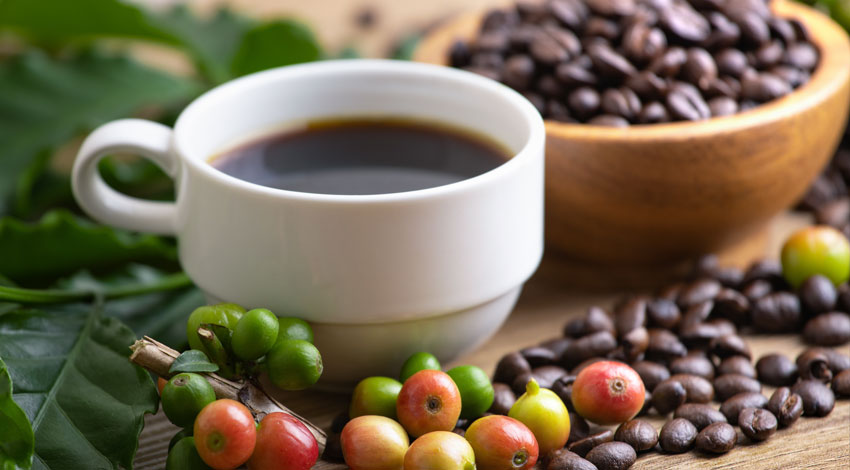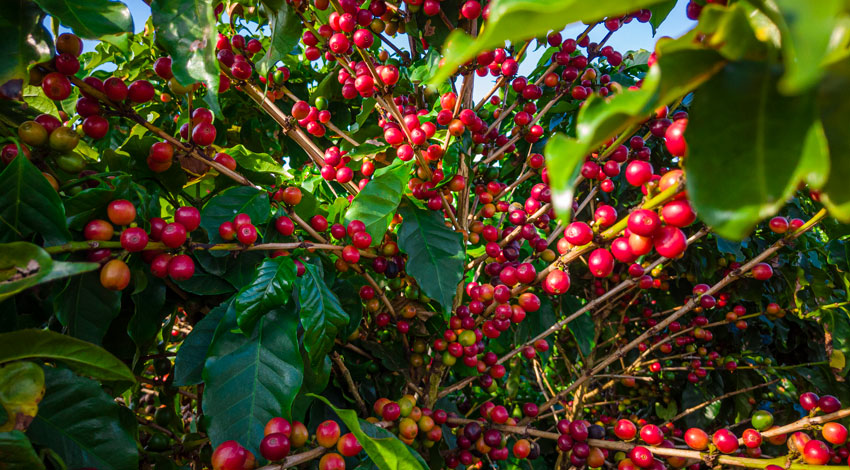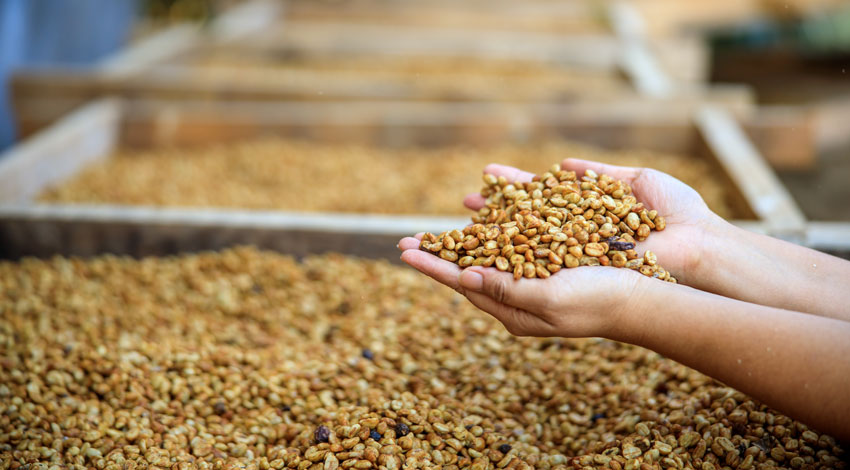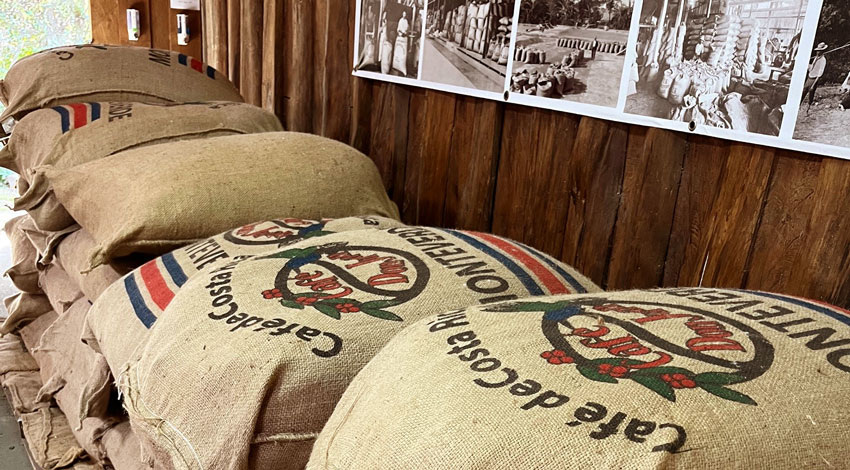Coffee From Farm to Cup — How Costa Rica Grows & Harvests its Beans
Hi There! I’m Lizzie from Road Scholar, and I learned so much while attending A Taste of Costa Rica. As a coffee lover, one of the most fascinating experiences of this learning adventures came from planting my feet on a coffee farm while experts introduced us to this fruit. So, the next time you’re choosing a bag of coffee beans at the market or trying to decide which brew to order at your local coffee shop, here’s a glimpse into what goes into growing and harvesting Costa Rican coffee cherries!

Growing the Coffee Plants
With eight coffee-growing regions and harvesting records that date back as far as 1791, Costa Rica’s coffee industry is small but mighty. The ideal conditions for growing Arabica beans are at elevations of approximately 5,000 to 7,000 feet above sea level. This makes Monteverde one of the sweet spots — a spectacular mountain region that’s also home to some rare cloud forests. And you can experience both the Don Juan Coffee Farm and those cloud forests on Road Scholar’s A Taste of Costa Rica!
Farmers take pride in producing quality over quantity when it comes to growing and harvesting their coffee plants. For a farmer just starting out, the growing process can take from three to five years before a successful initial coffee bean harvest is produced. First, it takes about 14 months for seedlings to be nurtured to the point that they are hardy enough to plant in a field, which happens during Costa Rica’s wet season starting in June. The moist soil will then help grow the roots.
From that point, it takes about a year to get a bloom (they self-pollinate, since they’re hermaphrodites). But even after that, it’ll still take farmers a minimum of seven to nine months to produce their initial harvest. Luckily, the original plants can then produce year after year for about 30 years.
The plants are ready to be picked starting in November, and the harvest season lasts about four months in total. Because the beans don’t ripen simultaneously, Costa Rican farmers choose to harvest their Arabica completely by hand.

Harvesting the Fruit, Washing and Drying the Beans
The outer husk, or skin, of the red ‘cherry’ bean is called the cascara. Under that is the mucilage, a sticky, honey-like coating in the pulp that surrounds the seed. Which means the beans inside the fruit are actually wet.
Once the beans are harvested, Costa Rican farmers use two methods for processing. The wash process involves pouring the beans into a machine which presses and squeezes the fruit. Then the beans are spun in a centrifuge to remove the mucilage and released into wash bins. From there, the beans are dried, which takes two to three weeks in a greenhouse. That’s the usual process for most of the coffee we get from Costa Rica. And farmers don’t waste that mucilage — they use it as fertilizer when replanting.
The other method Costa Rica farmers use to process their coffee beans is called the honey process, where the mucilage is not removed from the beans. Instead, the beans are laid out to dry in the heat of the sun. Since these beans are moister, they take longer to dry — about four to six weeks. And in that time, they’re absorbing the slowly caramelized sugars from the mucilage that surrounds each bean. So, honey-processed coffee tends to have a slightly more syrupy body than washed coffee.

Pealing, Resting and Exporting the Beans
After the beans are dried, a machine is used to peal the parchment down to the green bean. Then, the green coffee beans are sealed in plastic bags inside canvas sacks and left to rest for at least three months. That’s how the oils, taste, acidity and aromas develop before they’re shipped to coffee roasters and shops.
Of the coffee grown in Costa Rica, 95% is exported. It’s a $1.6 billion industry per year. And that’s small beans (excuse the pun), compared with, say, the $60 billion coffee industry in Colombia. So, it’s a good thing Costa Rica isn’t dependent on coffee as its main export. (Costa Rica makes its largest agricultural profits by exporting pineapples and bananas.)
Roasting the Beans
If you’re visiting the Don Juan Coffee Farm and tasting the coffee that was grown there, their roasting methods take about 22 minutes to produce a light roast, 24 minutes for a medium roast and 26 minutes for a dark roast. Mere minutes make the difference in taste. (A light roast will have more perceived acidity than a dark or medium roast.)

Here's a Myth Buster About Your Coffee
Contrary to popular belief, there is no difference in the amount of caffeine between light, medium or dark roast coffees, no matter which country’s coffee beans you’re using. If you’ve believed all this time that dark roast has more caffeine than light roast (or vice versa), it’s simply not true. The caffeine differential is miniscule. The roast affects only the flavor profile — not the caffeine level!
So, what does cause a difference in the amount of caffeine you’re getting from one cup of coffee to another? As the expert explained it, the percentage of coffee that dissolves in the water, coupled with the way you extract the coffee, is what determines the caffeine content. Phew — that’s some science lesson!
Drinking the coffee
When you buy a cup of coffee from your local coffee shop, the imported beans have either been roasted on site or at a roastery. The amount of time they’ve been roasted and the age of the beans (both before and after roasting) have an impact on the coffee’s flavor.
Same goes for the beans you use at home to make your coffee — whether they’re pre-ground or you’re grinding them yourself. In either case, they should be stored in a sealed container at room temperature (not in your refrigerator) in a dry place. If you go through your coffee pretty quickly, you can keep it in the package it came in, as long as you can reseal the bag. If you make coffee less often, a glass jelly jar with a screwed-on lid can work nicely to store on a shelf for a longer period of time.
And finally, what’s the best way to drink your coffee? Cream? Sugar? Black? Drumroll, please … the best way to drink your coffee is … the way you like it!
Let’s remember one thing, though. That cup of coffee you’re drinking — from the time the first seed was planted until you took your first sip — took about 30 people to make. So, raise your mug in appreciation for the Costa Rican farmers who work so hard in order for you to enjoy that delicious cup of coffee.
And if you’d like to experience the pura vida of Costa Rica for yourself, Road Scholar’s got a learning adventure that’s just right for you!
